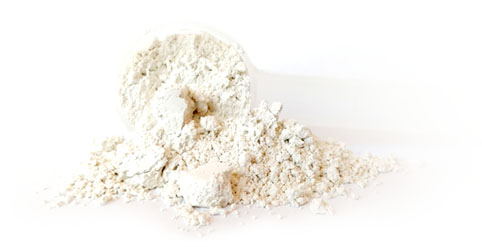
The Truth About Zeolite
Could this be the mineral balancing miracle we’ve all been looking for? According to research, this honeycomb-like structure that comes from volcanic eruptions that occurred

Are you a practitioner looking to offer your clients our revolutionary Vykon Custom powders?

Are you a practitioner looking to offer your clients our revolutionary Vykon Custom powders?

Are you a practitioner looking to offer your clients our revolutionary Vykon Custom powders?

Heavy metals are naturally occurring elements. Due to the industrial revolution, our exposure to these metals has significantly increased. While some heavy metals are essential, such as iron and copper, others can have detrimental effects on the human body such as accelerated aging as well as a host of other issues. It is especially important to be aware of toxic metals as they are acid-forming and are both physically and neurologically toxic. They become more harmful when they are buried in the tissues and can lead to birth defects, ADHD, autism, early aging, and mental illness. Some of the most common and problematic toxic metals today include aluminum, mercury, and lead.
Before we dive into those, let’s examine how and where we are encountering these toxic metals. There are a few sources to be aware of which include food, airborne pollution, prescription drugs, direct contact sources, and occupational exposure. When looking at food it’s important to keep in mind that with the degradation of our soil our food sources have become incredibly mineral deficient. So, we’re starting soil that is void of nutrients and then we’re adding fertilizers, potentially contaminated water, runoff from nearby industrial plants, and finally preservation and refining processes; this greatly effects not only the nutritional content, but also the toxic metal content of our food. Another source of toxic metal exposure is airborne pollution; this can be in the form of aircraft exhaust, oil, radioactive minerals (uranium), and smoking (cadmium, arsenic, and nickel sprayed on tobacco and marijuana plants). Yet another source of toxic metal exposure to be aware of is from prescription drugs. These medications often contain mercury, aluminum, and sometimes fluoride. Another huge contributor is vaccines given to babies and children. Some direct contact sources include antiperspirants and cosmetics (aluminum), dental amalgams (mercury, copper, cadmium), copper IUDs (copper), some hair dyes and lipsticks (arsenic), and some household lawn and garden sprays (lead and arsenic). Finally, occupational exposure from various work sites and professions can be a source of exposure. Some of the most toxic occupations include building trades, plumbers, electricians, painters, welders, auto repair, printing, ironwork, and farming. Now that we have discussed the most common types of exposure, let’s look at aluminum, mercury, and lead specifically.
Aluminum is a metal that can contribute to neurological conditions such as Alzheimer’s, Dementia, and Parkinson’s. Not only that, but it also impedes glutathione activity, ultimately leading to more metals building up. Aluminum also interfered with the absorption of both calcium and iron. Luckily, it does tend to be one of the easier metals to eliminate from the body. Some of the most common sources of aluminum include food or beverages from aluminum cans, aluminum foil, cookware, antacids, anti-perspirants, baking powders, drinking water (often added in municipal water supple), drying agents in salt, processed cheeses (Velveeta), bleached floor, and food or drugs processed with aluminum machinery.
Mercury can be a very toxic metal causing hundreds of symptoms that range from mental illness and insomnia to immune system and adrenal gland dysfunction. It is nick names the “Mad Hatters” toxic metal as it tends to accumulate in the brain making it difficult to remove and can cause serious neurological issues. Some sources of mercury toxicity to be aware of are fish (keep in mind the smaller the fish the less mercury contamination), fungicides and pesticides, disinfectants, metal fillings, vaccines, allergy shots, tattoos, and medications (diuretics, contact lens solution, Preparation H, Mercurochrome, Merthiolate). Keep in mind that children may be born with mercury toxicity as it can be passed from the mother to the fetus, and it can also be shared in breast milk.
Lead is a toxic metal that weakens the body and can potentially build up in the brain. It plays a role in thyroid health and thus your metabolism as it interferes with iodine uptake by the thyroid and may also inactivate the hormone thyroxine. Furthermore, lead will absorb into the bones and replace calcium; negatively affecting bone health. Lead may also displace other minerals such as zinc, manganese, copper, and iron. Lead has been found to be associated with ADD, ADHD, autism, and delayed development in children. Unfortunately, lead toxicity is very common in our society. However, blood testing is not very accurate in detecting chronic lead toxicity. Sources to bring to your attention lead include pipes (water in lead pipes), pesticide residue, paints, inks, lubricants, dyes, root vegetables (the skin), ceramic glazes, hair dyes, cigarette smoke, and diets that lack calcium, magnesium, or iron.
A Hair Tissue Mineral Analysis Test (HTMA) can reveal what metals are deposited in the hair tissue during the time the hair grew, similar to a biopsy. The levels on the test indicate that a person is excreting a particular metal. Protocols to support heavy metal detox can vary. For example, the kidneys are the main excretory organs for aluminum, therefore supporting the kidneys with herbs such as dandelion leaves can be beneficial. A person’s oxidation rate will play a huge role in how fast they are able to excrete toxic metals. Mineral balancing is always the best place to start; if a person is depleted, they will not have the energy to detox. Other key factors involve having a good binder on board, ensuring proper elimination is taking place, and making sure detox pathways are open.
By: Vykon

Could this be the mineral balancing miracle we’ve all been looking for? According to research, this honeycomb-like structure that comes from volcanic eruptions that occurred

Heavy metals are naturally occurring elements. Due to the industrial revolution, our exposure to these metals has significantly increased. While some heavy metals are essential,

What Are Binders? Binders are used to remove different toxins from the body. We are exposed to toxins everyday and these powders may help to

Vykon is committed to inspiring and empowering individuals, and animals, to achieve their best life by producing top quality products to support their journey. All-natural supplements with the finest ingredients to fuel the body; whether you are using the custom powders for yourself or your animals, based on HTMA science, to erase debilitating symptoms and regain health; or the performance line to take your game to the next level. Vykon is innovative, forward-thinking, beta-tested and here to help the world live and perform better.

Business Hours:
Monday – Friday | 8:00 am – 4:00 pm ET
Are you a Health Practitioner looking to offer your clients our revolutionary Vykon Custom powders?
Are you a practitioner looking to offer your clients our revolutionary Vykon Custom powders?
Vykon Customs is a division of Vykon Inc.